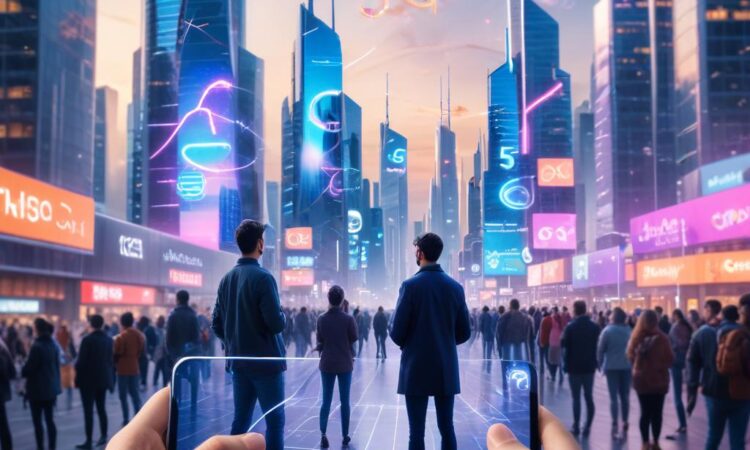5G and Beyond: Revolutionizing Mobile Connectivity
The continued rollout of 5G networks and the emergence of concepts like 6G are driving advancements in mobile connectivity, enabling new applications and services with faster speeds and lower latency. This technological evolution promises to reshape our digital world, transforming the way we live, work, and interact.
The Rise of 5G
5G, the fifth generation of wireless technology, represents a significant leap forward from its predecessors, offering several key advantages:
- Ultra-high Speeds: 5G networks deliver download speeds that are significantly faster than 4G, reaching up to 10 gigabits per second (Gbps) or even higher in some cases. This enables faster downloads, streaming, and online gaming.
- Low Latency: Latency refers to the delay between a request and a response. 5G significantly reduces latency, allowing for near-instantaneous communication. This is crucial for real-time applications such as virtual reality (VR) and autonomous driving.
- Enhanced Capacity: 5G networks can handle a much greater number of devices and data traffic compared to previous generations. This is essential for accommodating the growing number of connected devices in the Internet of Things (IoT).
- Improved Reliability: 5G networks are designed to be more reliable and resilient than previous generations, ensuring consistent connectivity and reducing dropped calls and service interruptions.
5G Applications and Impact
The enhanced capabilities of 5G are driving the development of numerous innovative applications and services across various sectors:
Mobile Gaming
5G enables immersive and lag-free mobile gaming experiences. Players can enjoy high-resolution graphics, smooth gameplay, and real-time multiplayer interactions without delays.
Virtual and Augmented Reality
VR and AR applications require low latency and high bandwidth, which 5G provides. This enables more realistic and engaging experiences, opening up new possibilities in entertainment, education, and training.
Autonomous Vehicles
Self-driving cars rely heavily on real-time data communication for navigation and safety. 5G’s low latency and high reliability are critical for enabling safe and efficient autonomous driving.
Smart Cities
5G plays a crucial role in developing smart cities. It enables the interconnectedness of various smart devices and infrastructure, such as traffic management systems, smart lighting, and environmental monitoring sensors.
Healthcare
5G facilitates remote healthcare applications, such as telemedicine, remote patient monitoring, and robotic surgery. It enables high-quality video conferencing and real-time data transmission for improved patient care.
Industrial Automation
5G supports the development of smart factories and industrial automation. It enables the integration of robots, sensors, and machines for increased productivity and efficiency.
The Future of Mobile Connectivity: 6G and Beyond
While 5G is still in its early stages of deployment, research and development are already underway for the next generation of wireless technology, known as 6G.
6G is expected to offer even faster speeds, lower latency, and higher capacity than 5G. It aims to address emerging challenges and opportunities, such as:
- Terahertz Communication: 6G will explore the use of terahertz frequencies, which offer significantly higher bandwidth and data rates compared to existing technologies.
- Holographic Communication: 6G may enable holographic communication, allowing for the transmission of 3D images and videos with unprecedented realism.
- Artificial Intelligence (AI) Integration: AI will be integrated into 6G networks to optimize network performance, enhance security, and enable intelligent automation.
- Edge Computing: 6G will leverage edge computing to process data closer to the source, reducing latency and improving responsiveness.
The development of 6G is still in its early stages, but it holds the potential to revolutionize mobile connectivity even further, unlocking new possibilities and shaping the future of our digital world.
Conclusion
The evolution of mobile connectivity from 5G to 6G and beyond is a testament to the relentless pace of technological innovation. These advancements are transforming the way we live, work, and interact, opening up new possibilities and opportunities across various sectors.
As we continue to push the boundaries of wireless technology, we can expect to see even more transformative applications and services emerge in the years to come. The future of mobile connectivity is bright, filled with endless possibilities and the potential to create a more connected and innovative world.

